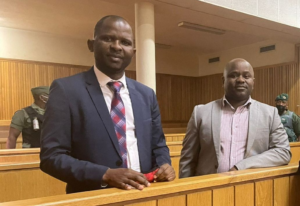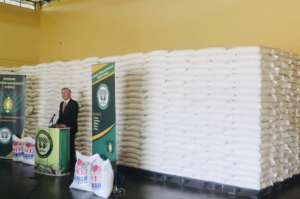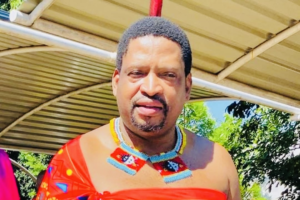CREATIVE RESISTANCE: MUSIC AND ART AS TOOLS OF CHANGE IN ESWATINI
Music and art have become some of the most powerful tools for challenging repression in Eswatini. In a country where speaking openly against the monarchy often comes at great personal risk, young Swazis have turned to creativity to express dissent, build solidarity, and inspire hope. Their works, bold and thought-provoking, have carved out spaces where the voices of a silenced majority can be heard.
Musicians have increasingly woven the realities of life under the monarchy into their lyrics, tackling themes like corruption, inequality, and police brutality. Songs reflecting the struggles of everyday life resonate deeply with citizens, offering a sense of solidarity amid uncertainty. Artists have bypassed traditional media—largely controlled by state interests—and embraced social media platforms to share their music. These platforms allow them to reach audiences far and wide, connecting their fight for justice with a global community of supporters.
Visual art has also played a pivotal role in Eswatini’s resistance. Street murals and digital illustrations capture the pain, resilience, and defiance of a people yearning for change. Art installations in public spaces have forced passersby to confront the realities of systemic inequality, using creativity to challenge the narrative of stability and prosperity the monarchy seeks to maintain. This visual rebellion is both a form of education and a means of protest, reminding Swazis of the power they hold in unity.
Performing artists have turned to spoken word, theater, and dance to amplify their calls for reform. These performances, often staged in community centers or shared digitally, tackle topics ranging from gender-based violence to political oppression. They provide safe spaces for reflection and dialogue, empowering audiences to see themselves as agents of change.
The regime has not been blind to this creative resistance. State-run cultural programs have attempted to co-opt traditional art forms, promoting loyalty to the monarchy while discouraging politically charged works. However, these efforts have only strengthened the resolve of young artists who continue to push boundaries and redefine what it means to resist.
Art and music have not only brought people together within Eswatini but have also drawn international attention to the country’s struggle. Advocacy groups and the diaspora have amplified Swazi creatives on global platforms, ensuring their voices reach beyond the kingdom’s borders. This exposure has provided much-needed solidarity and has connected Swazis to a global movement for justice.
The creative defiance of Eswatini’s youth is more than just an outlet for frustration—it is a testament to their hope and resilience. Through their work, they remind the world that resistance takes many forms and that the fight for democracy is not only fought in protests and courtrooms but also on canvases and stages. Their art inspires action, fosters unity, and keeps alive the dream of a free and just Eswatini.



